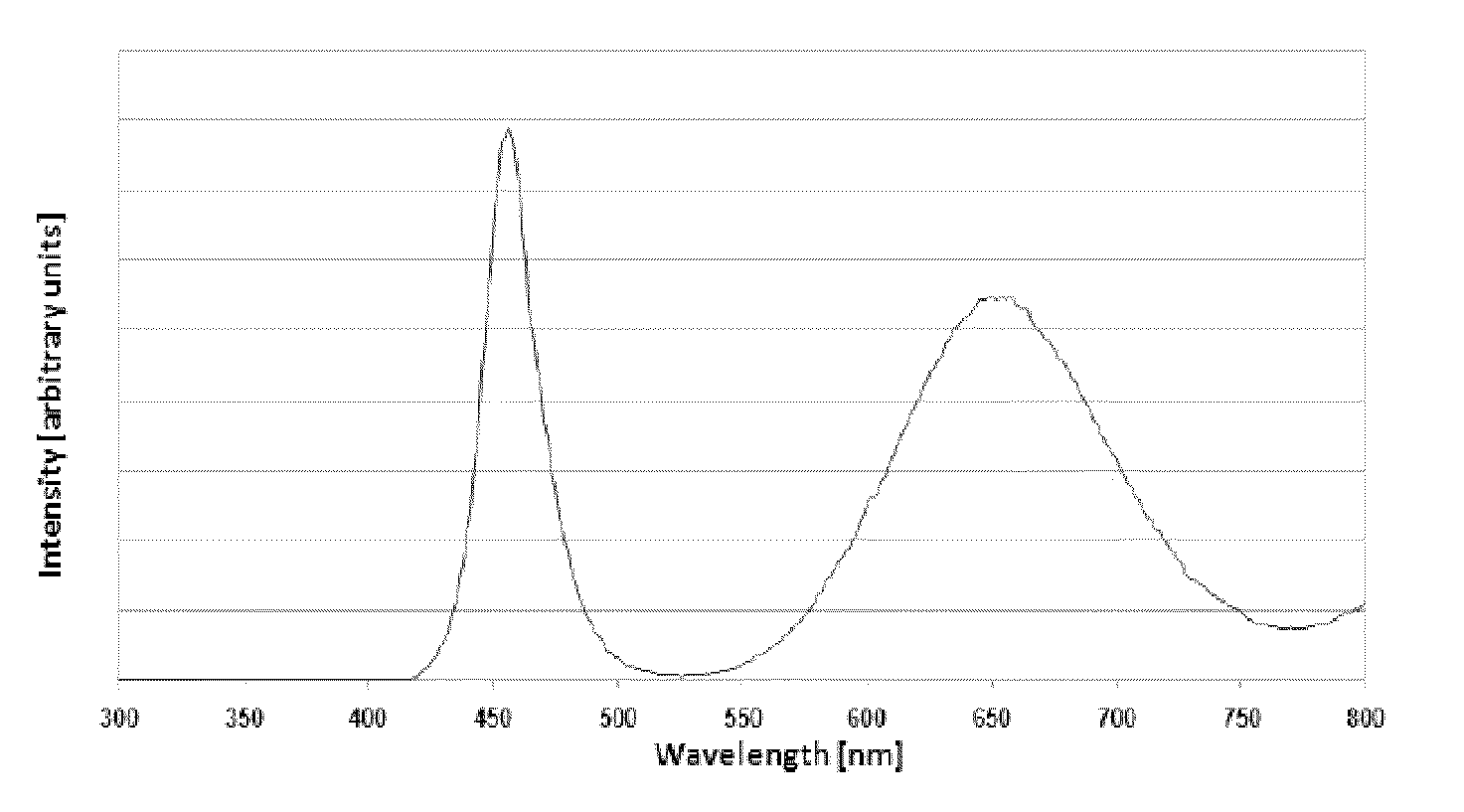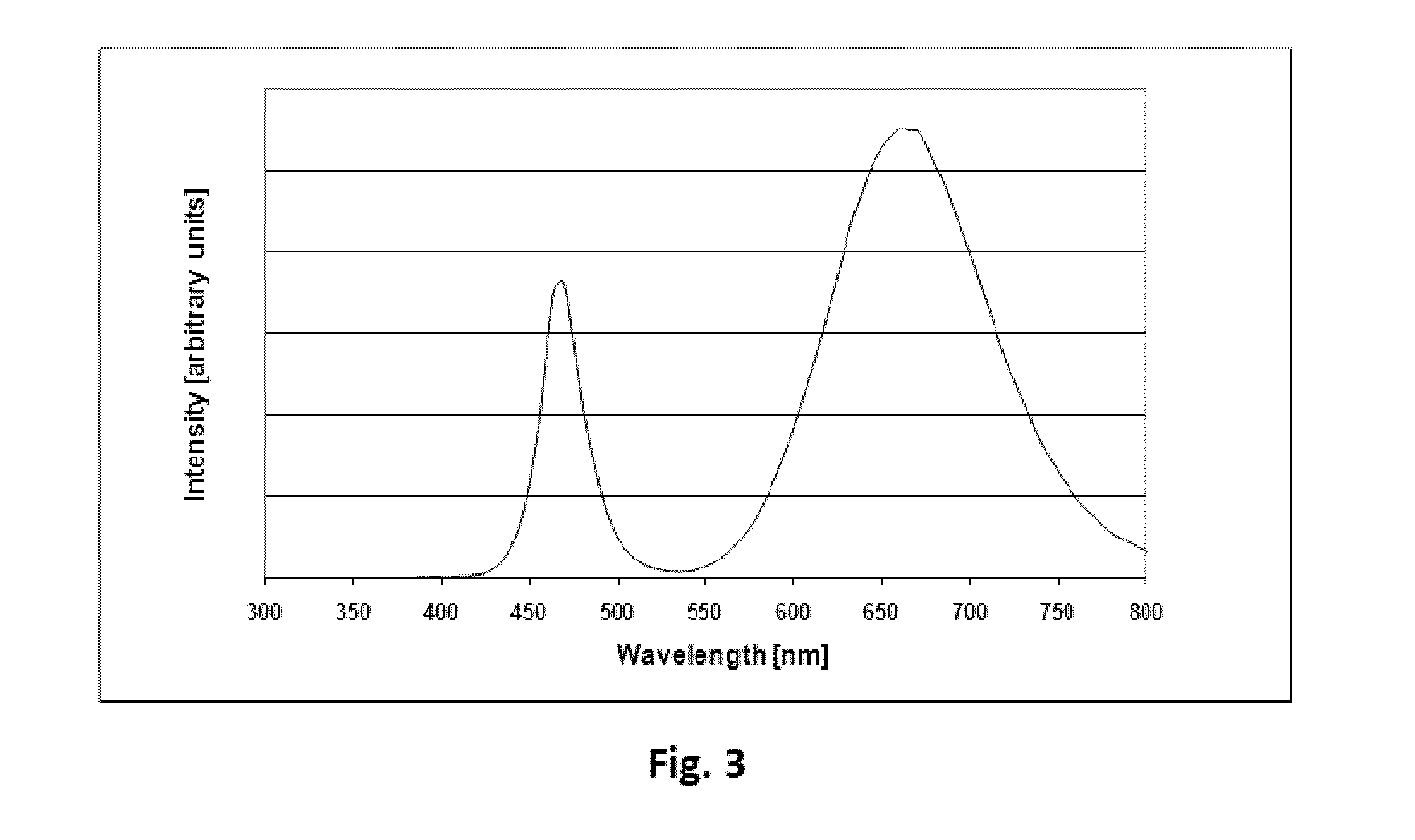Lighting assembly
a technology of assembly and light, applied in the field of leds, can solve the problems of insufficient understanding of the interaction and nature of interdependence between certain groups of receptors, the inability to realize the effect of a certain number of receptors, and the inability to achieve the effect of facilitating plant growth
- Summary
- Abstract
- Description
- Claims
- Application Information
AI Technical Summary
Benefits of technology
Problems solved by technology
Method used
Image
Examples
example
[0076]A LED lighting fixture was constructed for comparison testing purposes based on the single LED device having identical output spectrum of the FIG. 3. The lighting fixture consisted of 60 individual LED units having a power consumption of 69 W which includes the power consumption of the AC / DC constant current driver.
[0077]The comparison devices were commercial HPS (High Pressure Sodium) lamp greenhouse lighting fixture with total power consumption of 420 W and commercial LED greenhouse LED fixture. The commercial LED fixture was based on individual blue and red LED devices having total power consumption of 24 W.
[0078]The LED lighting fixture according to the present invention was tested against the above-mentioned commercial LED devices using following PPF measurement procedure and arrangement.
[0079]PAR irradiance (irradiance value between 400 nm and 700 nm) and PPF-values were calculated by measuring the light fixture spectra from 300 nm to 800 nm and absolute irradiance value...
PUM
 Login to View More
Login to View More Abstract
Description
Claims
Application Information
 Login to View More
Login to View More - R&D
- Intellectual Property
- Life Sciences
- Materials
- Tech Scout
- Unparalleled Data Quality
- Higher Quality Content
- 60% Fewer Hallucinations
Browse by: Latest US Patents, China's latest patents, Technical Efficacy Thesaurus, Application Domain, Technology Topic, Popular Technical Reports.
© 2025 PatSnap. All rights reserved.Legal|Privacy policy|Modern Slavery Act Transparency Statement|Sitemap|About US| Contact US: help@patsnap.com



